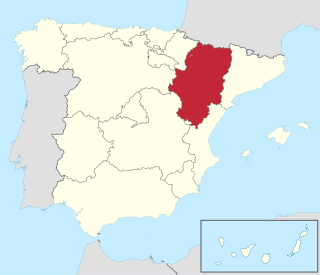
Aragon is an autonomous community in Spain, coextensive with the medieval Kingdom of Aragon. In northeastern Spain, the Aragonese autonomous community comprises three provinces : Huesca, Zaragoza, and Teruel. Its capital is Zaragoza. The current Statute of Autonomy declares Aragon a historic nationality of Spain.
San Pedro is the Spanish language form of Saint Peter. It can refer to:
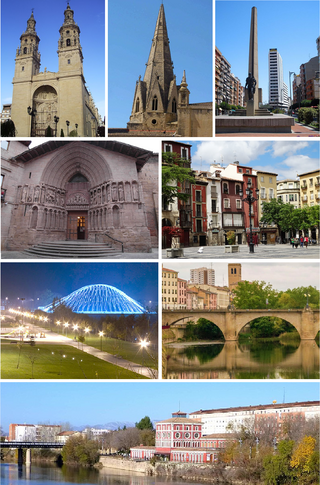
Logroño is the capital of the province of La Rioja, situated in northern Spain. Traversed in its northern part by the Ebro River, Logroño has historically been a place of passage, such as the Camino de Santiago. Its borders were disputed between the Iberian kingdoms of Castille, Navarre and Aragon during the Middle Ages.
San Juan Bautista is the Spanish-language name of Saint John the Baptist. It may refer to:

In Spain, a comarca is either a traditional territorial division without any formal basis, or a group of municipalities, legally defined by an autonomous community for the purpose of providing common local government services. In English, a comarca is equivalent to a district, county, area or zone.
Jonacatepec de Leondro Valle is a city in the Mexican state of Morelos. The city serves as the municipal seat for the surrounding municipality of the same name. The municipality reported 15,690 inhabitants in the year 2015 census.
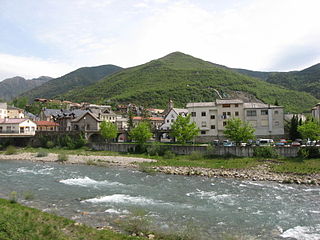
Biescas is a municipality of northeastern Spain close to the border with France, in the midst of the Pyrenees in the province of Huesca. The name seems to provide from the term bizka, which means "hill" in a Proto-Indo-European language.

La Orotava is a town and a municipality in the northern part of Tenerife, one of the Canary Islands of Spain. The area of the municipality stretches from the north coast to the mountainous interior, and includes the summit of the Teide volcano, Canary Islands' and Spain's highest point at 3,718 m. At 207.31 km2, it is the largest municipality of the island of Tenerife. The population is 41,255 (2013).

Oteiza or Oteiza de la Solana, is a village and a Spanish municipality of the Foral Community of Navarra, located in the merindad of Estella, in the Estella Oriental region, 51 km from the capital of the community, Pamplona. Its population in 2016 was 939.

La Vall d'Alcalà is a valley in the Marina Alta region of Alicante, Spain.

The designation artede (la) repoblación was first proposed by José Camón Aznar in 1949 to replace the term Mozarabic as applied to certain works of architecture from the Christian kingdoms of northern Spain between the end of the 9th and beginning of the 11th centuries. Camón argued that these buildings were related stylistically to the architecture of Asturias and owed little to Andalusian styles. Moreover, since they were built by Christians living under Christian rule, neither were they Mozarabic.

Ateca is a municipality located in the province of Zaragoza, Aragon, Spain. At the time of the 2015 census (INE), the municipality had a population of 1,969.

Manchones is a municipality in the province of Zaragoza, Aragon, Spain. According to the Spanish Statistical Institute (INE), the municipality had a population of 123 inhabitants in 2010. The pueblo is in the comarca of Campo de Daroca, about 6 kilometres (3.7 mi) northwest of Daroca and just southeast of Murero in the Calatayud-Daroca depression. The Jiloca River passes to the west.

Sos del Rey Católico is a historic town and municipality in the Cinco Villas comarca, province of Zaragoza, in Aragon, Spain.
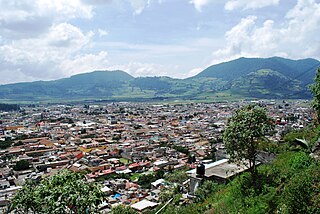
The municipality of Tenango del Valle is located in the southern portion of the Valley of Toluca in Mexico State, about 72 km southwest of Mexico City and 25 km south of Toluca. The municipal seat is the city of Tenango de Arista. While the seat is officially named Tenango de Arista, it is more commonly referred to as Tenango del Valle, as this was the original name of the town. Tenango del Valle is best known as the site of the Teotenango archeological site, which was a walled city inhabited from about 900 C.E. to 1550 C.E.

Seno is a municipality located in the Bajo Aragon area, close to Maestrazgo in province of Teruel, Aragon, Spain, at an altitude of 792 m. According to the 2018 census the municipality has a population of 39 inhabitants.
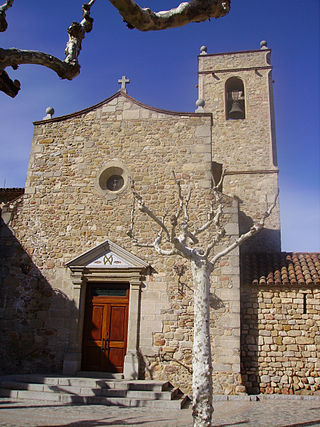
Òrrius is a village and municipality in the comarca of Maresme in the province of Barcelona and autonomous community of Catalonia, Spain. The municipality is delimited by La Roca del Vallès to the North, Vilassar de Dalt to the South East, Argentona to the south, and Cabrils to the southwest.
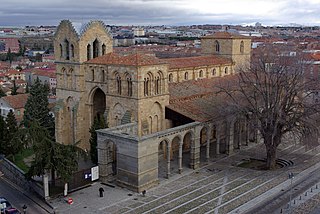
The Basílica de los Santos Hermanos Mártires, Vicente, Sabina y Cristeta, best known as Basílica de San Vicente, is a church in Ávila, Spain. It is one of the best examples of Romanesque architecture in the country.

Fiscal is a municipality in the province of Huesca, Sobrarbe comarca, Aragon, Spain. It is located 76 kilometers from Huesca. It is 768 meters above sea level, and covers an area of 170 km². As of 2018, it had a population of 327 inhabitants.

The Ara Christi Charterhouse, or the Cartuja de Ara Christi, is a former Carthusian monastery located just outside the town of El Puig in the province of Valencia, Spain. The site now includes a hotel and utilizes the facilities for functions.





















